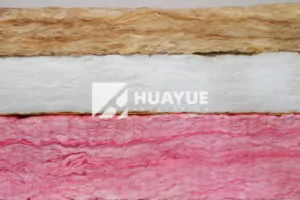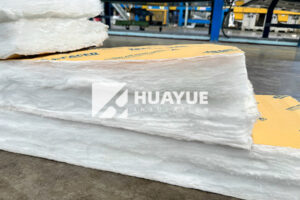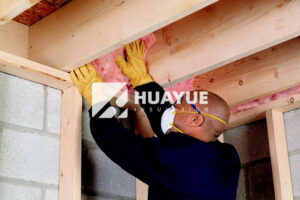What Are the Top 5 Uses of Glass Wool Insulation Material?
Glass wool insulation is changing the way we think about energy efficiency and safety in buildings—solving problems before they even begin.
Glass wool insulation is most often used for drywall cavity insulation, pipe insulation, commercial building envelopes, suspended ceilings, and industrial roofing. These applications show its flexibility, excellent thermal and sound insulation, and fire safety.
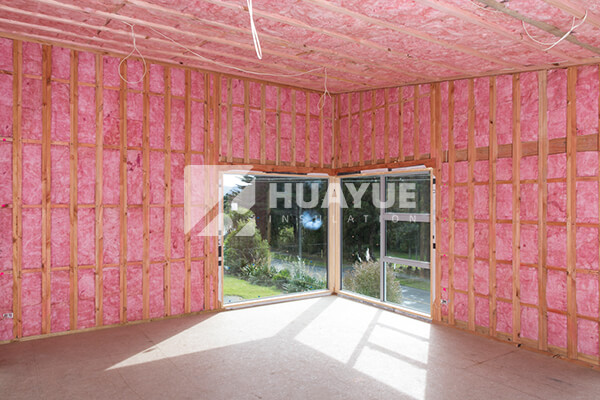
Since I started working in the thermal insulation industry more than 20 years ago, I have seen glass wool shape many projects. I have watched it solve acoustic issues in offices. I have seen it increase safety in chemical factories. Each time, the results were clear: energy costs went down, comfort went up, and risks went away. Keep reading, and I will show you in detail how glass wool insulation delivers such wide value.
What Makes Glass Wool Insulation Stand Out in Modern Construction?
When budgets are tight and new regulations appear every year, finding a reliable and versatile insulation material can feel overwhelming.
Glass wool insulation stands out because it is lightweight, fire-resistant, easy to install, and naturally resistant to mold and pests. It is also recyclable, eco-friendly, and comes in many forms and thicknesses to fit almost any construction need.
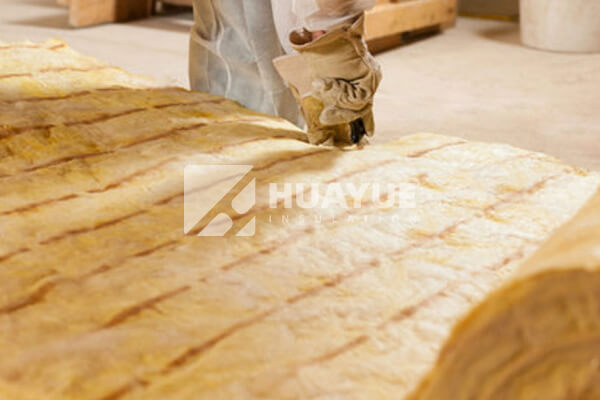
To break it down further, let’s look at what happens when real-world engineers select insulation. In my experience, performance and practicality matter most. Glass wool checks both boxes. For example:
Key Advantages of Glass Wool Insulation
| Feature | Real Benefit |
|---|---|
| Lightweight & Compressible | Fast, simple installation—even for DIYers |
| Fire Resistance | Improved safety in every building |
| Mold & Pest Resistant | Worry-free service life |
| Versatile Form Factors | Fits uneven or complex surfaces |
| Eco-Friendly | Supports sustainable building practices |
Glass wool also comes in several finishes. You might choose a paper finish for easy handling, or an aluminum finish for extra vapor protection. Its thickness can be adjusted, starting at 60 mm and increasing by 20 mm steps—for tough climates, 160 mm ensures the best thermal and acoustic performance, especially on sloped roofs.
How Does Glass Wool Insulation Improve Drywall and Cavity Performance?
Noise travels fast in open spaces—making offices and homes uncomfortably loud, and reducing privacy.
Glass wool’s fibrous texture blocks sound and traps heat, making it ideal for drywall and cavity insulation. It creates both a quiet environment and stable indoor temperatures.
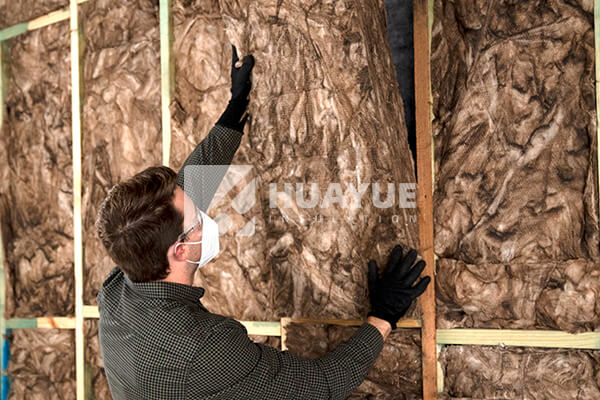
Let me put it simply: most modern buildings use drywall cavities that need to be filled. Empty cavities leak energy and noise. Once, I managed a project where thin walls amplified outside traffic. Installing glass wool completely changed the room. We noticed quieter interiors immediately—plus lower heating and cooling bills in the months that followed.
Why Glass Wool Excels in Drywall and Cavity Insulation
- Flexibility means it fits tightly, sealing every void.
- It stops air movement, reducing convective heat loss.
- It meets fire safety codes, so occupants and owners feel safe.
- It does not grow mold: something every facility manager loves.
Whether you are retrofitting a home, designing a new office, or constructing a school, glass wool transforms walls and ceilings into high-performance barriers.
Why Is Glass Wool Ideal for Pipe Insulation?
Hot water pipes and cold ducts can lose energy or sweat moisture—leading to bigger problems like corrosion or inefficiency.
Glass wool pipe insulation wraps tightly, holding temperature steady and acting as a barrier to both heat loss and moisture ingress.
Energy loss in piping adds up fast. I remember a chemical plant where uninsulated pipes created condensation in summer and huge heat loss in winter. After we wrapped those pipes with glass wool, not only did corrosion stop, but system efficiency jumped. The maintenance team no longer feared unexpected pipe failures.
Pipe Insulation Benefits Table
| Problem Without Insulation | Glass Wool Solution |
|---|---|
| Energy loss | Thermal barrier cuts heating costs |
| Corrosion under insulation | No water absorption, no hidden rust |
| Safety concerns | Fire-resistant, tougher than plastic |
| Difficult installation | Flexible, easy to fit, even on bends |
Whether you use reinforced foil or canvas, glass wool pipe wraps suit every system—heating or cooling, industrial or commercial.
How Does Glass Wool Support Large Spaces Like Commercial Buildings?
Commercial buildings need solutions that last. Maintenance can be expensive, especially if occupancy comfort is poor.
Glass wool blankets are easy to roll out and anchor in place, covering large wall or ceiling surfaces. They deliver both insulation and top-tier acoustic performance in even the busiest business environments.
I helped design an office refurb that had echoing halls and temperature swings. After installing glass wool above the ceiling tiles and in partition walls, it was like someone turned down the city noise. Employees reported better focus, and energy audits showed marked cost reductions.
Commercial Building Needs Table
| Need | Glass Wool Match |
|---|---|
| Quick installation | Flexible, modular blankets |
| Large coverage | No gaps, consistent performance |
| Durable solution | Resists time, pests, and moisture |
| Energy code compliance | Excellent R-values, proven record |
From hotels to factories, any large space benefits from glass wool’s reliable performance and ease of application.
What Makes Glass Wool Blankets the Top Choice for Suspended Ceilings?
Ceiling systems often need to fight both noise and heat—especially in open-plan offices or workshops.
Glass wool blankets for suspended ceilings offer durability, flexibility, and outstanding sound absorption. They can be cut and shaped with little effort.
I worked on a project where poor ceiling insulation created a noisy, uncomfortable workspace directly below rooftop mechanical units. Installing glass wool above the ceiling tiles made the workspace more pleasant to be in, cut down noise from equipment, and kept temperatures steady throughout the day.
Suspended Ceiling Benefits Table
| Challenge | Glass Wool Feature |
|---|---|
| Sound transmission | Absorbs and reduces echoes |
| Weight restrictions | Lightweight and does not sag |
| Installation access | Easy to remove and replace |
| Safety requirements | Meets or exceeds fire codes |
Whether in retail stores, conference centers, or industrial facilities, suspended ceilings built with glass wool insulation deliver results you can see and hear.
How Does Glass Wool Insulation Optimize Industrial Roofing Systems?
Industrial roofing faces harsh weather, temperature swings, and the risk of rapid heat loss.
Glass wool insulation makes industrial roofing more energy-efficient and soundproof—while requiring little maintenance. It handles both heat and vibration, even in tough environments.
On one of my first large warehouse projects, we fought to keep the winter chill at bay. Metal roofs radiated cold into the workspace. Once we installed glass wool panels, energy waste fell. The client’s heating bills dropped by double digits. With less condensation, the roof and stored materials also lasted longer.
Industrial Roofing Needs Table
| Issue | Glass Wool Benefit |
|---|---|
| Extreme temperatures | Stable thermal regulation |
| Acoustic demands | Dampens noise from rain & machines |
| Maintenance costs | Long-lasting, minimal repairs |
| Fast installation | Large panels speed up project |
Industrial roofs, whether warehouses or factories, get robust, low-cost performance from glass wool every time.
Conclusion
Glass wool insulation offers versatile, safe, and efficient solutions for walls, pipes, ceilings, and roofs—making it the smart choice for modern energy-conscious building projects.
You may also be interested in:
Ready to Get Started?
Get in touch with our experts for personalized solutions tailored to your needs.
Get Free QuoteLatest Articles
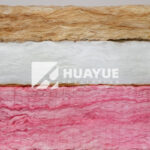
Eco Batt Insulation: What You Need to Know?
Dec 12, 2025
Let's Work Together
Ready to take your business to the next level? Get in touch with our team of experts and let's discuss how we can help you achieve your goals.
Get Free Solutions
